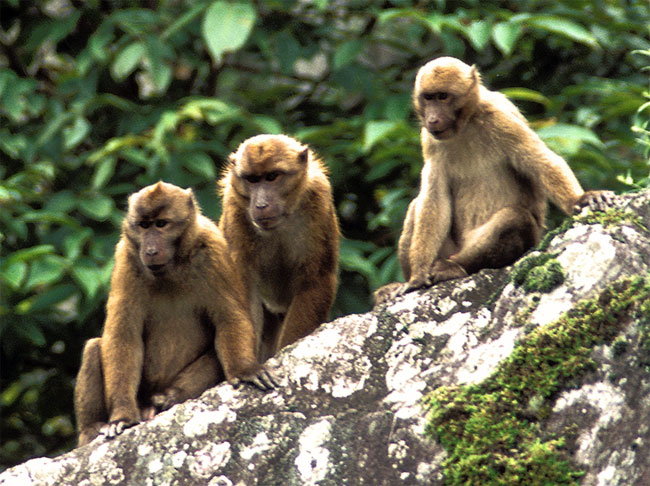The Undiscovered Monkey: Researchers Identify New Species of Macaque

Scientists in India have found what they believe to be a new species of macaque monkey.
The simian was first observed on Aug. 19, 2003, in the extreme northeastern area of India's Arunachal Pradesh territory, and is believed to be a different Macaque taxon, or group biologists identify as being separate from a similar species.
"We thought it was a new taxon because it looked unusual, unlike any other macaque known to science," M.D. Madhusudan, a primary investigator of the monkey told LiveScience in an e-mail interview from India. "We also realized that it may be a new species because it combined morphological traits of two species, and was therefore not a subspecies of an already known macaque species."
The researchers are proposing that the monkey, which they have dubbed the Arunachal macaque, be given the scientific designation of Macaca munzala when the details of its discovery are published in an upcoming issue of the International Journal of Primatology. These monkeys are generally large, heavyset, and dark brown, according to the preliminary research.
Munzala, means the "deep forest monkey", in the Monpa dialect of the Buddhist tribe of the West Kamang and Tawang areas where conservationists observed the animal. It has many similarities with other macaque species. It is distinct, however, in its extremely dark brown coat, stocky tail, dark brown facial skin, distinctive facial marks, and lack of a prominent chin and cheek whiskers, according unpublished research supplied to LiveScience.
"We quickly came to the conclusion that it is not a simple hybrid between two species because the two potential parental species, the Assamese and the Tibetan macaques, did not occur together in this area," Madhusudan explained. "And we found a significant number of troops of this monkey over a very large area, over 460 square miles (about 1200 square kilometers), troops in which all the members looked very similar to each other. This is not expected if hybrids are constantly being produced today between two parental species which co-occur together."
The researches hope to learn the total extent of the macaque's range and numbers in the future. At present, they know that the primate lives in the high altitude, broad-leaved forests of India 's sparsely populated northeastern climbs, at elevations more than 11,400 feet (about 3500 meters). Researchers cite this as one possible reason that the monkey was not previously recognized as a new species.
Get the world’s most fascinating discoveries delivered straight to your inbox.
"Not many biologists have traveled to this region looking for wildlife," Madhusudan said. "Those that have, until now, may actually have missed it. Some others that may have seen it before us may have overlooked the possibility of a new species, thinking it could be a regional variant of one of the existing species."
Conservationists see the area, which was known as "the hump" during World War II by pilots who flew supplies from India to China , as a biological wellspring. In addition to the new macaque, they discover that India 's leaf deer, black barking deer, and Chinese goral also inhabit the region.
"This region of Arunachal Pradesh, with its rugged mountains and extensive forest cover is truly one of India's last wild places," Madhusudan said.
 Live Science Plus
Live Science Plus





